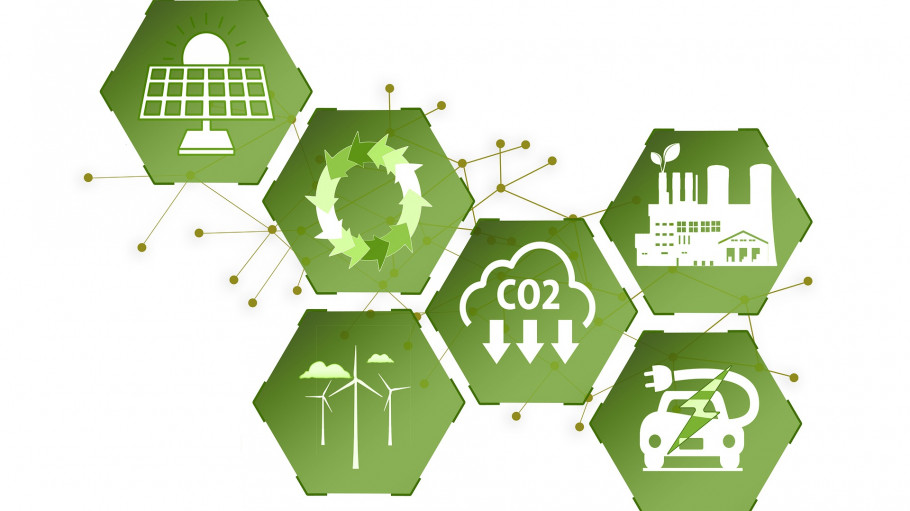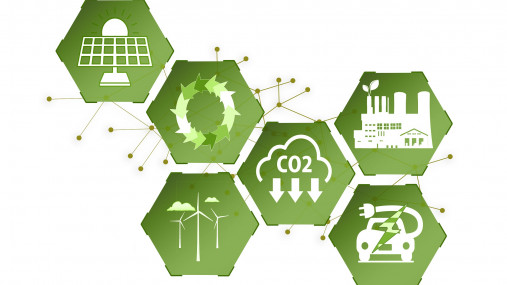
Press releases » ETS revision sets stronger incentives for clean technologies uptake, but €45 bn EU steel exports are still at risk, says EUROFER
ETS revision sets stronger incentives for clean technologies uptake, but €45 bn EU steel exports are still at risk, says EUROFER
Downloads and links
Recent updates

Brussels, 18 December 2022 – On Saturday night EU institutions agreed on the revision of the Emissions Trading System following an earlier agreement on the Carbon Border Adjustment Mechanism. The final text sets new rules for the upcoming years until 2030, which constitute a critical period for the uptake of low carbon technologies at industrial scale in the steel sector. While the ETS revision introduces some stronger incentives for the uptake of new technologies to decarbonise industry, a pre-defined free allocation phase-out trajectory risks wiping out a large part of EU steel exports worth €45 billion if no concrete export solution is found before 2026, warns the European Steel Association.
“We welcome the revised measures on steel benchmarks providing stronger incentives for the uptake of low-carbon technologies such as Direct Iron Reduction using green hydrogen, while preserving the need for effective carbon leakage protection in the transition from the current technologies. This avoids abrupt disruptions in the regulatory framework when steel companies face massive investment needs”, said Axel Eggert, Director General of the European Steel Association (EUROFER).
Eighteen months after the launch of the Commission proposal, EU institutions reached a final agreement on the revision of the EU ETS, which is the cornerstone of the EU climate policy. While the directive provides the overall framework rules, much work remains ahead on their implementation and interaction with the recently adopted CBAM. Such implementing process needs to deliver a well-functioning and watertight Carbon Border Mechanism.
“We are highly concerned by the lack of a concrete solution to counter carbon leakage risk on export markets, while a pre-defined free allocation phase-out trajectory is set at this stage. If no concrete solution is found by 2026, €45 billion steel exports are at existential threat, due to the exponentially increasing carbon price in the EU that has no equivalent in the domestic markets of our major trading partners. It is essential that EU institutions revert to this issue as soon as possible in the foreseen review process to deliver an effective measure”, stressed Mr. Eggert.
Preserving the competitiveness of EU industry on both internal and export markets, and implementing urgent measures to boost cleantech investment and speed up low carbon energy carriers, electricity and hydrogen availability and affordability, will be crucial to avert de-industrialisation. The European steel sector, which has launched an unprecedented number of low carbon projects to reduce its emissions by 55% by 2030 and become carbon neutral by 2050, is committed to playing its role for a successful decarbonisation, but the enabling financial, energy and regulatory conditions must be put in place as soon as possible. This is even more urgent now that EU industry is challenged by an unprecedent energy crisis and more supportive industrial policy measures taken by third countries such as the U.S. Inflation Reduction Act.
“Capital investment in new technologies only makes sense if CO2-low energy, such as electricity and hydrogen, are being supplied in sufficient volumes, and made available at affordable costs. However, neither condition is currently in place, and this situation makes investment extremely risky. The EU and its Member States urgently need to secure the relevant energy infrastructure and supply to our industry”, concluded Mr. Eggert.
Contact
Lucia Sali, Spokesperson and Head of Communications, +32 2 738 79 35, (l.sali@eurofer.eu)
About the European Steel Association (EUROFER)
EUROFER AISBL is located in Brussels and was founded in 1976. It represents the entirety of steel production in the European Union. EUROFER members are steel companies and national steel federations throughout the EU. The major steel companies and national steel federation of Turkey and the United Kingdom are associate members.
The European Steel Association is recorded in the EU transparency register: 93038071152-83.
About the European steel industry
The European steel industry is a world leader in innovation and environmental sustainability. It has a turnover of around €125 billion and directly employs around 310,000 highly-skilled people, producing on average 153 million tonnes of steel per year. More than 500 steel production sites across 22 EU Member States provide direct and indirect employment to millions more European citizens. Closely integrated with Europe’s manufacturing and construction industries, steel is the backbone for development, growth and employment in Europe.
Steel is the most versatile industrial material in the world. The thousands of different grades and types of steel developed by the industry make the modern world possible. Steel is 100% recyclable and therefore is a fundamental part of the circular economy. As a basic engineering material, steel is also an essential factor in the development and deployment of innovative, CO2-mitigating technologies, improving resource efficiency and fostering sustainable development in Europe.

Strasbourg, 17 December 2025 – The European Commission’s latest proposals on the Carbon Border Adjustment Mechanism (CBAM), unveiled today, correctly identify several loopholes that risk undermining its effectiveness, notably regarding EU exports, downstream sectors and circumvention practices. However, despite these laudable efforts, the measures put forward fail to deliver a comprehensive and durable response to carbon and jobs leakage, warns the European Steel Association (EUROFER).
A milestone occasion to quickly and effectively restore affordable electricity, to relaunch the
decarbonization and strengthen the international competitiveness of the European steel
industry.
Brussels, 02 December 2025 – Unchanged negative conditions – U.S. tariffs and trade disruptions, economic and geopolitical tensions, protracted weak demand and still high energy prices – continue to weigh on the European steel market. EUROFER’s latest Economic and Steel Market Outlook confirms for 2025 another recession in both apparent steel consumption (-0.2%, unchanged) and steel-using sectors (-0.5%, revised from -0.7%). A potential recovery is expected only in 2026 for the Steel Weighted Industrial Production index (SWIP) (+1.8%, stable) and for apparent steel consumption (+3%, slightly revised from +3.1%) – although consumption volumes would still remain well below pre-pandemic levels. Steel imports retained historically high shares (27%), while exports plummeted (-9%) in the first eight months of 2025.